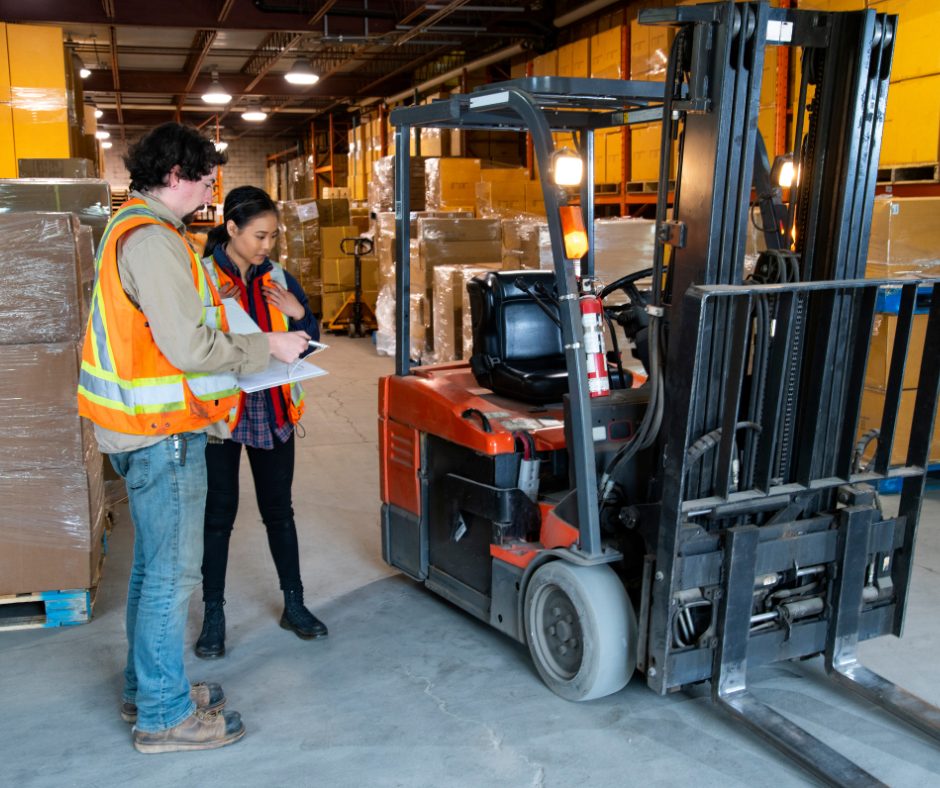In the Australian warehouse sector, order fulfillment comprises 60-70% of expenses. Using a warehouse management system (WMS) with voice-enabled features can lower these costs.
Voice-enabled WMS uses hands-free and wireless radio-frequency devices that have both speech recognition and speech synthesis, two closely related technologies. (Speech recognition is the process of converting spoken words into text, while speech synthesis involves generating artificial speech from written text.) This is technology your team members can literally wear on their belt.
For third-party logistics providers and supply-chain managers, voice-enabled WMS is becoming an increasingly necessary competitive advantage. Here are five ways voice-enablement technologies can help reduce order-fulfillment costs by increasing worker productivity.

1. Boost worker efficiency with hands-free tools
Voice-enabled picking tools are a game-changer for improving worker productivity in fulfillment centres. By freeing up their hands and eyes to focus solely on picking tasks, workers can easily handle more items. A voice-directed system removes the need for workers to:
- Constantly check picked items against the order. Instead, they only need to verbally confirm each item, usually by reading a two-digit ‘check number’ at the item location, and the system takes care of the rest.
- Return to the assignment desk after every order, allowing them to seamlessly switch between workflows, engage in reverse picking, or batch-pick orders (simultaneously collecting items for multiple orders).
- This reduction in travel time not only increases productivity but also reduces stress.
- Voice enablement offers additional benefits in put-away, stock checking, and other warehouse processes.
- Furthermore, it eliminates tasks like printing picking lists and manually entering picking confirmations, thereby enhancing administrative productivity.
2. Accelerate new employee training
Voice enablement can improve overall fulfillment accuracy by minimising the time new hires spend in error-prone training periods. It takes only a few minutes for a voice-picking device to

learn its user’s voice, with minimal additional training in the warehouse to account for on-the-job speech variations and ambient noises. After that, users simply follow directions. Voice-enabled systems can also answer user questions in mid-task.
One other benefit may not be apparent at first—millennials tend to prefer employers who offer the latest technology, so not only does voice technology make it easier to train new workers, it’s a must-have for attracting members from the millennial workforce. Plus, warehouse workers from all generations appreciate the way voice technology makes it faster and easier to gain proficiency.
3. Streamline data entry to boost efficiency
Using a voice-directed system can significantly enhance order accuracy, reaching levels as high as 99.9% according to VoicePicking.com. By eliminating distractions like paper documents, scanners, and terminal screens, verbal-item confirmation can be faster and more efficient than manual entry.

This not only improves productivity but also maximises the potential of your existing workforce. With voice-enabled systems, managers can easily track important details such as the date, time, location, and quantity of each picked item. Even in the rare instances of errors, these systems make it simpler to identify the source and rectify the issue promptly. This becomes particularly crucial as service-level agreements become more stringent, requiring swift resolution of customer inquiries and the ability to promptly address any process errors.
4. Enhance employee performance and safety
In warehouse operations, human involvement remains critical, and the success of your business relies on employing capable individuals who are not just skilled but also motivated. At the managerial level, a voice-enabled WMS is an excellent tool for monitoring and improving employee performance. It can be used for individual training and evaluations, as well as analysing overall performance to identify areas for enhancement in work routines and recruitment strategies.

Voice enablement also contributes to occupational safety by reducing distractions and enabling workers to have both hands free while reaching and climbing for items. This can lead to a decrease in employee turnover, as voice guidance helps alleviate the pressure of making quick decisions and the constant concerns about making mistakes. This is especially beneficial for facilities that provide incentives for performance and order accuracy.
5. Manage inventory effortlessly with instant updates
Meeting customer expectations goes beyond fulfiling orders accurately and promptly—it also involves providing visibility into their inventory within your warehouse. With a voice-enabled WMS, you can receive real-time inventory updates, offering the most precise information for your customers. This ensures that you have up-to-the-minute visibility of your inventory.
Implementing voice enablement doesn’t require significant investments in software integration or additional administrative efforts, apart from acquiring the belt-worn devices. Leading warehousing and supply chain management systems already incorporate voice enablement as a standard feature. It’s simply a matter of investing in a system that offers seamless voice dialogue integration right out of the box and putting it to work for your inventory needs.
If you want to learn more about how to optimise your warehouse processes, get in touch.


